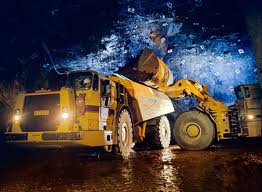The talk of replacing miners is everywhere in the media today, but how much automation do our Australian mines have left to do? The short answer is none, because all these advancements we read about in overseas mines have already happened here. The large advancements in automation that are being reported on around the world were all developed here, in the Australian Hardrock industry more than a decade ago. Only now are mining companies from around the world adopting the equipment and mining methods of our industry.
The big advancement was the remote underground loader that can drive itself back to the stock pile once the operator has got the bucket of dirt. That’s right the boggers (underground loaders) still need an operator to get a bucket of rock and this is the story not being told. Yes, some machines can work by themselves but what happens when something goes wrong, how much damage can be done? When you are talking about mining equipment, lots. Often the cost of repair is as much as an operator would cost for a whole year or more. Take what happen when they tried to get a loader to bog its own bucket of rock. It ended up stripping the front tyres, at $18,000 a tyre it didn’t take long for them to give up and the technology hasn’t advance any further since. Yet we still get stories from around the world about these “new technologies” that are going to replace people working in our mines.
As far as an underground mining crew goes, no one, including the truck drivers, are going to be replace any time soon. Charge up still needs people to fill the holes and tie everything in, service crew has to plum the mine with vent, power, air & water, offsiders to load bolts or rods, boggers to move the rock and nippers to run around after them all. What about the drills I hear you say? Yes, a lot drills do operate on an auto pilot like system but still require an operator, in the same way a plane requires a pilot, for when things go wrong. It has been shown that you don’t stay in business long if you let your 3million dollar drill rigs run unattended for any length of time, companies that have tried this all failed in a short amount of time.
The current method of Hardrock mining isn’t going to change any time soon, so anyone thinking about getting into the industry should look at doing it soon, as there is no competition for someone that has the right mining knowledge. If you wait to see this information on the news or get it from the cab driver, you will have left it too late and will now be competing with thousands of people. If you want more information about how I can help you get into the Australian Hardrock underground mining industry check out our “Do it yourself” package or leave your details in the link provided. Good luck hope you get your dream job soon.




